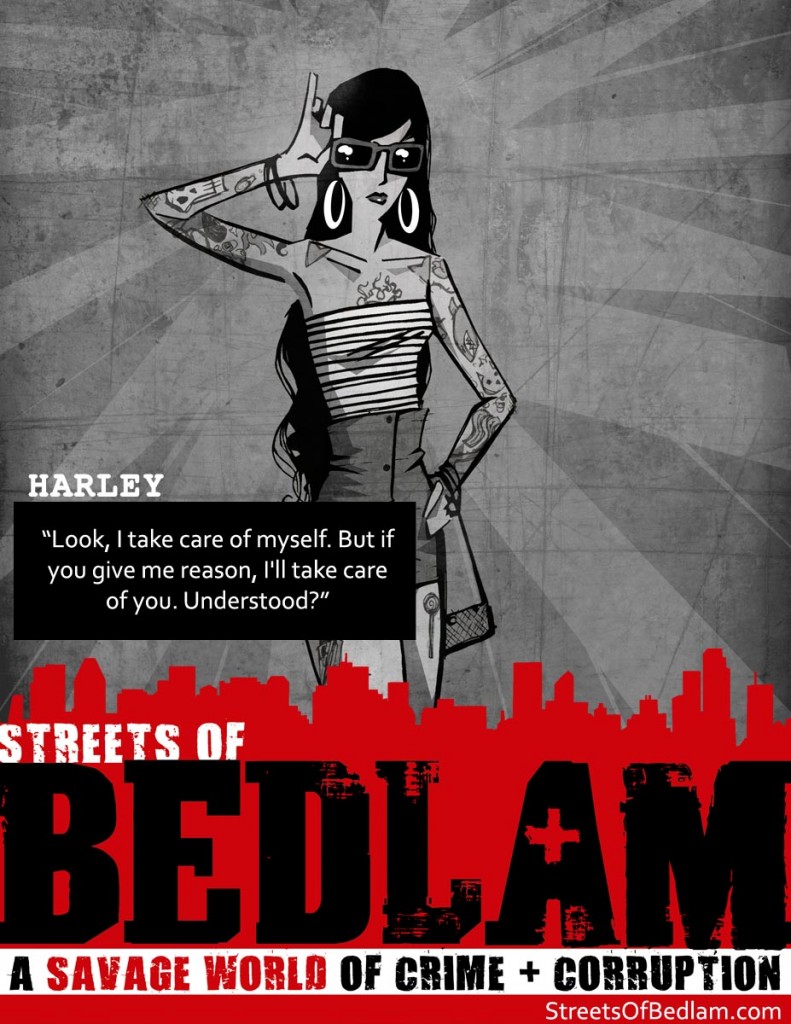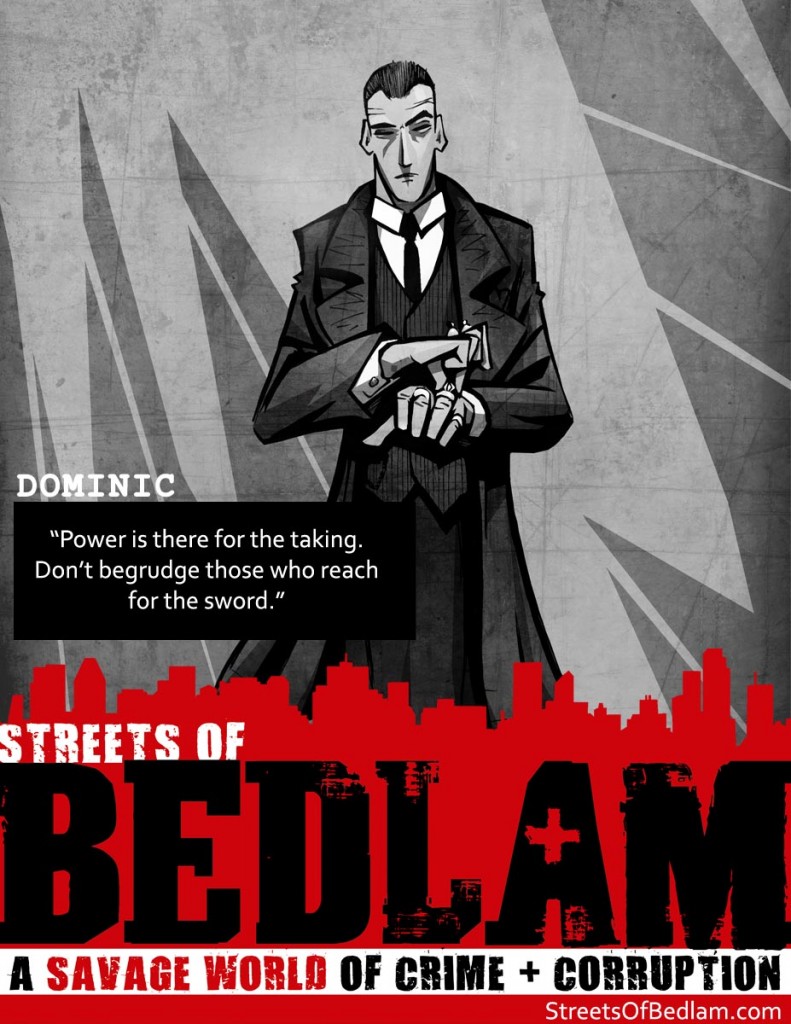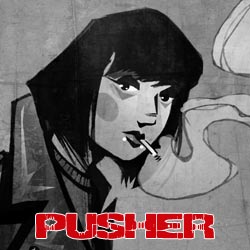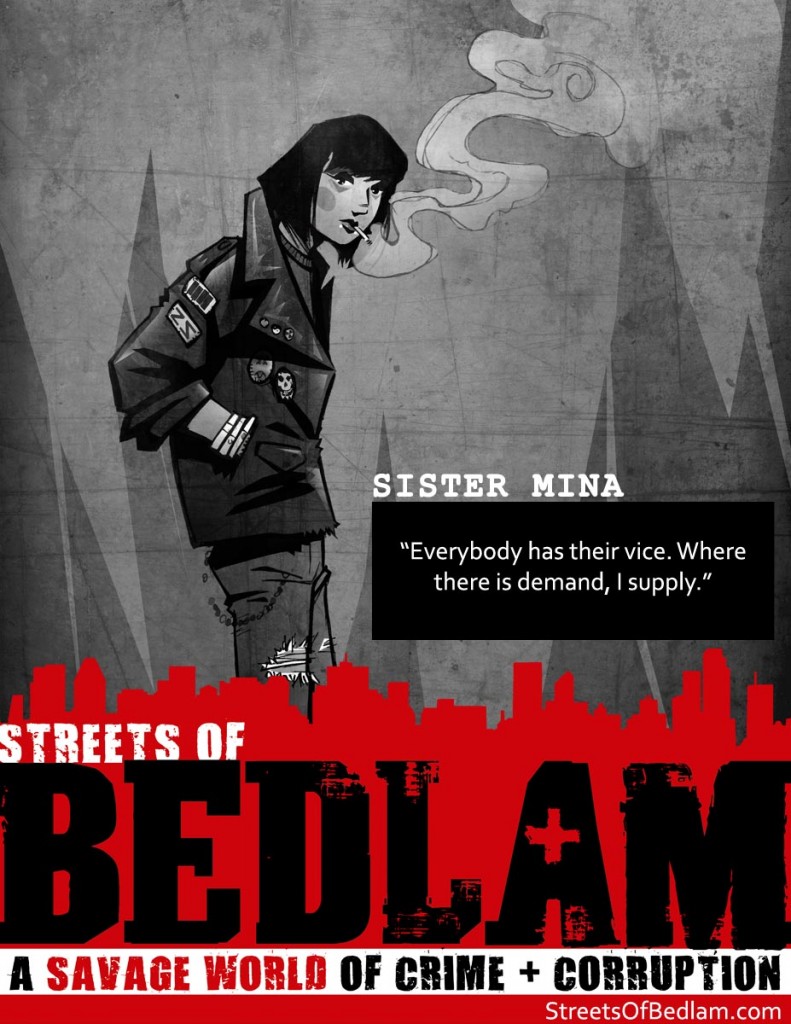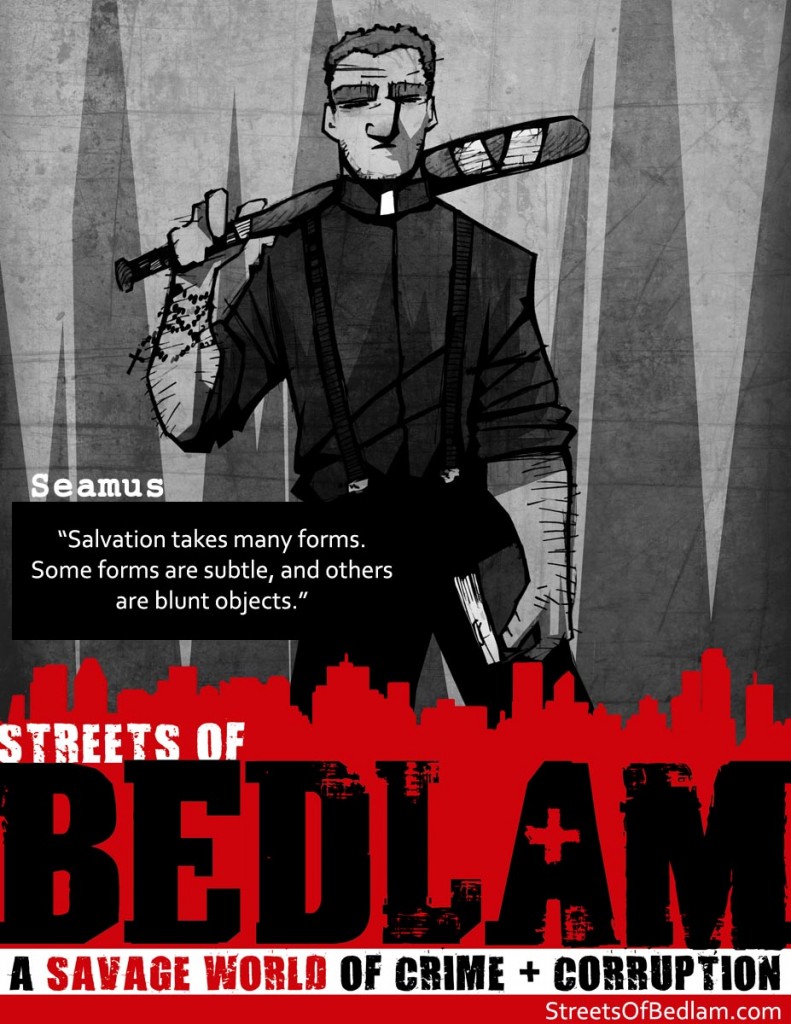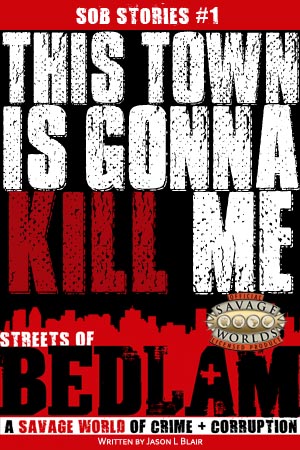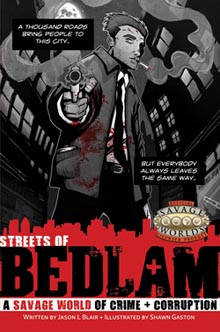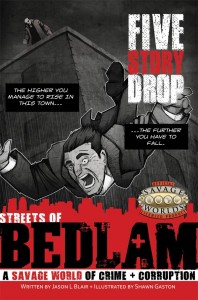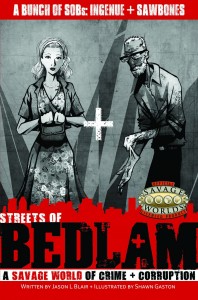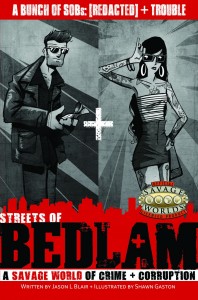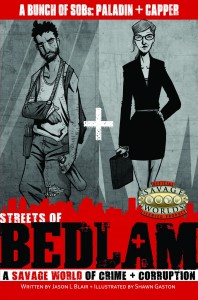Crime is an everyday part of Streets of Bedlam. The city is filled with folks who commit it, those who are victims of it, and bystanders who look the other way. Of course, there are also people who have to stick their heads right into the lion’s mouth—which is probably what you’ll end up doing when you play it. Some of these people are professionals, Badges for instance, but anybody can get dragged into an investigation, especially when something personal is involved somehow.
Instead of making investigations a simple roll in Streets of Bedlam, I wanted to give important crime scenes and criminal trails some heft, to make the process of figuring out a crime as engaging, and with as much dramatic back and forth, as combat. In books and movies, a well-done investigation adds emotional heft to the story. Through it, we learn about the criminal, the victim, the investigator, and how they all fit together.
Using the Savage Worlds system as the core, I wanted to give players new options so they can adjust the granularity of the game for their group, to tweak the focus to better fit the types of stories you might tell with Streets of Bedlam. While an investigation could be resolved by a single die roll, some investigations are more important, and have more to say, than a simple “I know who did it.” That’s where Streets of Bedlam‘s Investigation rules come into play.
When it comes to a crime scene, especially the scene of a murder, two sides come into conflict: the criminal and the investigator. Those two are the forces butting heads and this is where the good drama comes from.
As with combat encounters, crime scenes in Streets of Bedlam are set up beforehand by the game master*. The GM determines the criminals Intent, constructs a list of important clues, a list of secondary clues, and then rolls to see how successful the criminal was at fulfilling his Intent. Success and failure on this roll modifies the difficulty for whoever later comes along to investigate. These details are recorded on a brief Crime Sheet.
A criminal’s Intent is either to leave Zero Evidence or Set a Stage. When the criminal is attempting to leave Zero Evidence, he is trying to remove anything that could implicate him. When a criminal tries to Set a Stage, he is delivering a message which may be trying to point the finger at someone else (a frame job) or tell a story (as is often the case with serial killers). So the GM notes the criminal’s Intent and marks the level of success on the Crime Sheet.
(If the GM desires an even more granular level of investigation, she can roll for Intent for every major clue or “stage setting” as well.)
Throughout the examination of the crime scene, the investigator’s actions will be helped or hindered by the success of the criminal. Clues will be revealed through this back-and-forth where the player characters will have to butt heads with actions that took place minutes, hours, days, possible years beforehand. Time, area, and weather are among the other modifiers that could come into play—either against the investigator or against the perpetrator. A rainy day could wash away key evidence but it could also provide a nice wet patch to capture the criminal’s bootprint.
Failing to find the clues doesn’t dead end the investigation though. Instead, it may end up leading you somewhere else, along the wrong trail, but, hey, sometimes it’s not important that the person responsible is taken down—just that someone is.
This system will be detailed completely** in the Streets of Bedlam corebook but I wanted to give you all a look into the thought process behind the game. I hope this preview piqued your interest for what’s in store. Come back next week for a look at the game’s take on information extraction with a breakdown of the new Interrogation rules.
*Also as with combat encounters, the corebook will include sample crime scenes for impromptu investigations.
**As it’s still in playtest, some details may also change prior to release.


